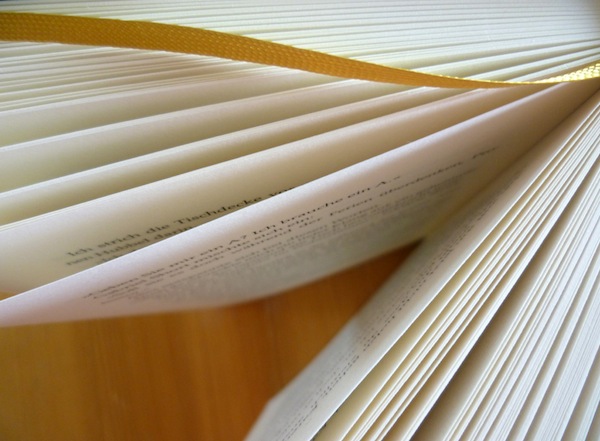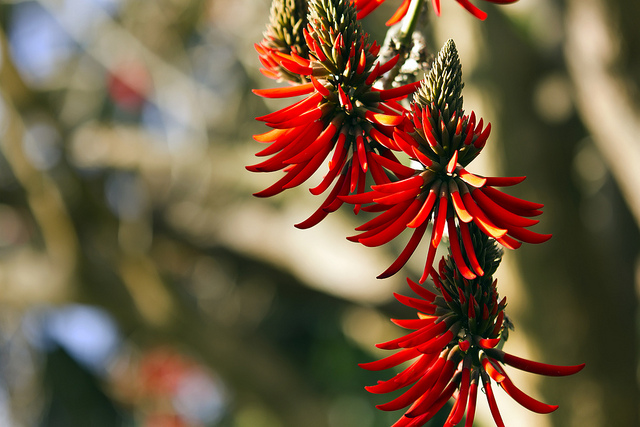
You know you love books.
Or perhaps you know some students who need to reignite the spark from childhood. The following poems celebrate all things stories and words. So make a cup of tea and cozy up with these book-loving poems that span over a century. Then open—or click on—your own favorite tale. . .and sail.
1) Emily Dickinson: “There is no Frigate like a Book” (1263)
The classic poem about the transcendent powers of reading.
*
There is no Frigate like a Book
To take us Lands away,
Nor any Coursers like a Page
Of prancing Poetry –
This Traverse may the poorest take
Without oppress of Toll –
How frugal is the Chariot
That bears a Human soul.
2) Dylan Thomas: “Notes On The Art Of Poetry”
A celebration of the sensory wonders found between the covers of books.
*
Notes On The Art Of Poetry
I could never have dreamt that there were such goings-on
in the world between the covers of books,
such sandstorms and ice blasts of words,
such staggering peace, such enormous laughter,
such and so many blinding bright lights,
splashing all over the pages
in a million bits and pieces
all of which were words, words, words,
and each of which were alive forever
in its own delight and glory and oddity and light.
(“Notes on the Art of Poetry” first appeared in Thomas’s essay by the same name–as prose!)
3) William Butler Yeats: “Where My Books Go”
From a writer to his readers. The love goes both ways.
*
Where My Books Go
ALL the words that I utter,
And all the words that I write,
Must spread out their wings untiring,
And never rest in their flight,
Till they come where your sad, sad heart is,
And sing to you in the night,
Beyond where the waters are moving,
Storm-darken’d or starry bright.
4) Julia Donaldson: “I Opened a Book”
Written by a children’s author, this poem about reading is quickly becoming a favorite for all ages.
*
I Opened a Book
“I opened a book and in I strode.
Now nobody can find me.
I’ve left my chair, my house, my road,
My town and my world behind me.
I’m wearing the cloak, I’ve slipped on the ring,
I’ve swallowed the magic potion.
I’ve fought with a dragon, dined with a king
And dived in a bottomless ocean.
I opened a book and made some friends.
I shared their tears and laughter
And followed their road with its bumps and bends
To the happily ever after.
I finished my book and out I came.
The cloak can no longer hide me.
My chair and my house are just the same,
But I have a book inside me.”
5) Maureen Doallas: “Reading Goodnight Moon”
Do you remember reading it?
*
Reading Goodnight Moon
is not like stopping
at McDonald’s
for your favorite double-shot latte.
You don’t drive through.
You take each word
in a languishing slide off the tongue,
naming what is named
that you never saw before.
Looking, finding, pointing delighted
in the room the moon the light
the red balloon that lifts
Darkness even as sleep
falls fast
and clock’s hands change
What you see changing
before a child’s eyes.
If you slow long enough
to take in what your child sees
with eyes that
Refuse to be moved
to a new page before
the first page is exhausted
The last page you turn
holds the dream
you thought would never last:
A snuggling close closer still
beneath moon’s shadows.
6) Katie Manning: “Scrabble with E.B. White”
A poem that celebrates just how important—and real—our favorite authors become in our daily lives.
*
Scrabble with E.B. White
His mustache still
surprised me.
I’d assumed as a child that E
was for Emily, but I smiled
and pushed seven tiles his way.
I’ll play Scrabble with anyone.
Runt. Ax. Child.
Loving. Win. Web.
Our words were haunted.
I first read Charlotte’s Web
when I was nine, I said.
I still love it. Do you enjoy it too?
Yes, it’s a great story, he said,
brow furrowed. Would you remind me
who wrote it?
7) Jill Baumgaertner: “Buswell Libary: 1995” from “Where Words Regain Their Meaning”
No collection of poems about reading would be complete without a dedication to the magical kingdom of libraries.
*
Buswell Libary: 1995
The pleasant mustiness of old books,
the stiffened bindings of the new
and the smell of ink, paper, glue,
and you have found your way again.
The college stacks, the secluded
carrels, the whisper-squeak
of the librarian’s cart.
Up the back stairs into the room
called Kilby, quiet with the hush
of study, the scratch of pen, the click
of laptop keys, a muffled rattle of ideas.
This is the place where words regain
their meaning, the books –Tolkien,
Chesterton — packed in like bricks–
Sayers, Lewis, MacDonald–
and parked on tabletops — Barfield,
Williams. Occasionally, a spray
of dust-moted sun
and through the windows a glimpse
of the unwritten world outside these words.
You have missed entire seasons
inside such spaces (the ripening of summer,
the blazing of fall), besotted with words,
breaking print into patterns,
tracing images, wrestling language
amidst the undiscipline of marginalia
in rooms like this filled with the whisperings
of words, not words that fall back inside
themselves like ice on a thawing pond,
but words that disperse to fill a space,
like breath that weaves the pliant silence
into the warp and woof of music.
Photo by Rosmarie Voegtli, Creative Commons, via Flickr.

